Shirataki Noodles is a commonly used ingredient in Japanese cooking. It is very popular as the weight loss miracle noodle and also because it is Keto friendly. I will explain what it is, health benefits, and how to cook and incorporate into your daily diet.
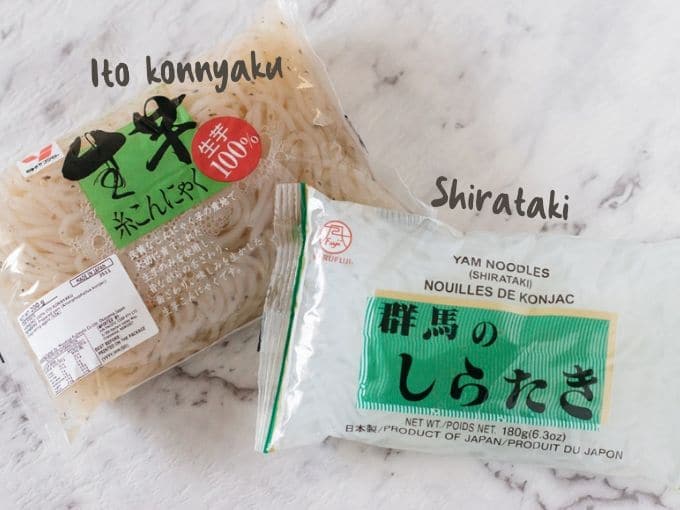
What is Shirataki Noodles?
Shirataki noodles are made from Konjac yam. Firstly, the konjac root is dried and crushed into a powder. The powder is then dissolved in water with calcium hydroxide as a coagulant. Before it completely coagulates, the mixture is extruded through tiny holes. Shirataki literally means white waterfalls. Shira = white. Taki = waterfalls. The noodles that come from the tiny holes look like white waterfalls.
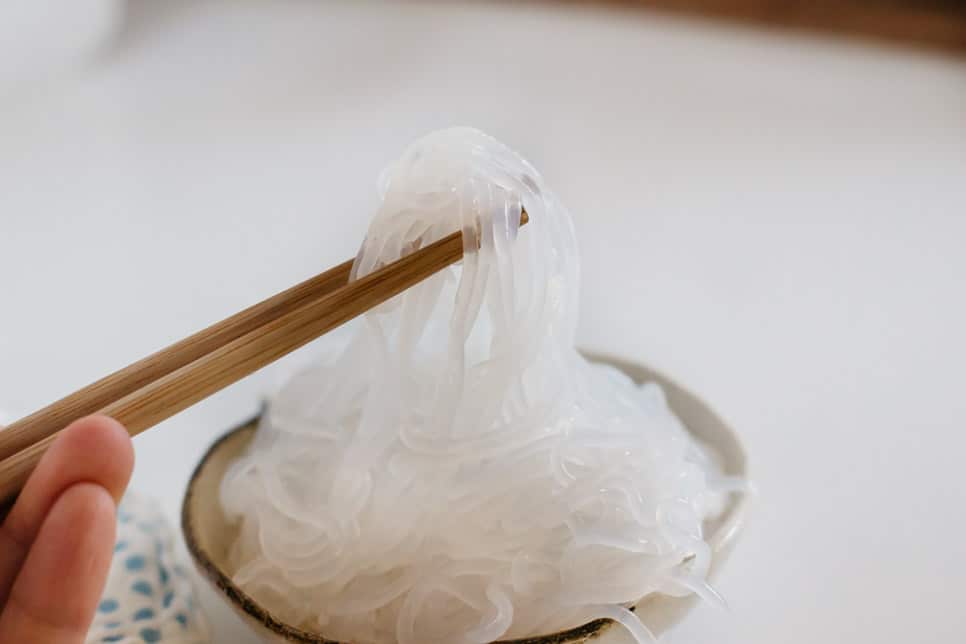
What is Ito-konnyaku?
Konjac yam is the main ingredient in Ito-konnyaku also. However, instead of the konnyaku powder mixture being pushed through the tiny holes, it is cut thinly like a cotton thread.
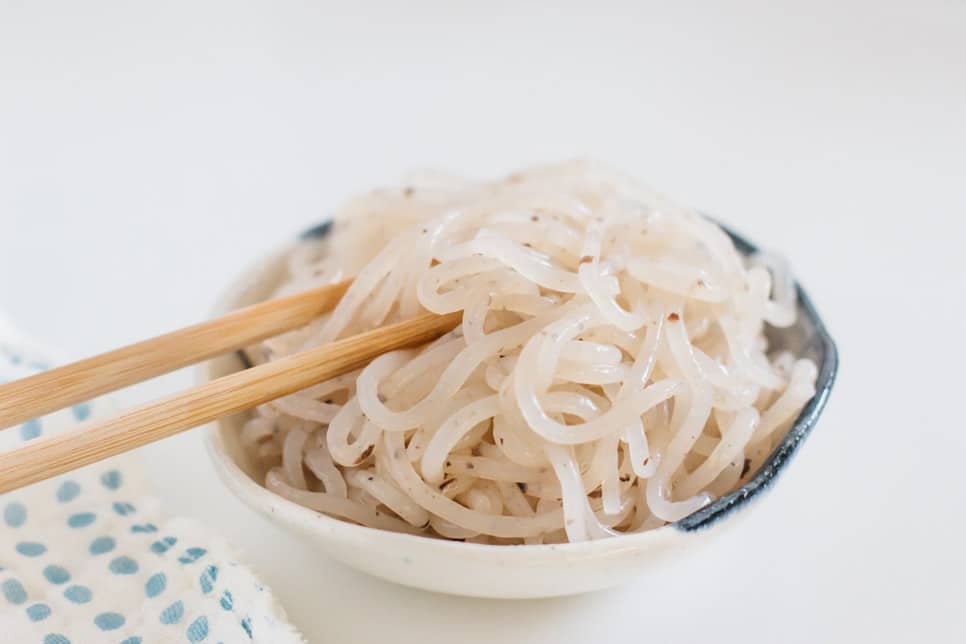
Difference between Shirataki & Ito Konnyaku?
The difference between the two is mostly appearance. Shirataki is thinner 2-3mm in diameter and Ito-Konnyaku is thicker 4-8mm in diameter as you can see in the above photos. So same ingredients but created with a different shape. The Kanto region produces most of the Shirataki and the Kansai region mostly the Ito-Konnyaku.
Health benefits of Shirataki noodles
The dietary fibre has a function of suppressing an increase in blood sugar levels when taken before meals or at the same time as meals. It also contains 97% water and maintains the water when it passes through the intestine, which helps to eliminate constipation. Eating before meals gives you a feeling of fullness and helps to control calories and prevent overeating. (Source: https://kan-etsu.com/knowledge/konnyaku/)
Where can you buy them?
If there are any Asian or Japanese grocery stores nearby, they usually stock shirataki noodles and Ito konnyaku. Also in Australia, you can buy those noodles from major supermarkets. Also, you can purchase Shirataki from online such as Amazon.
What do Shirataki noodles taste like?
They do not have much flavour or taste. Cooking the noodles in a sweet soy-based sauce gives them their flavour. The texture of Shirataki noodles is a little chewy and rubbery. How to remove the fishy odour?
How to remove the fishy odour
Yes, it does smell fishy even though it does not contain any fish. The fishy odour is due to the Calcium hydroxide as a coagulant agent in the manufacturing process. I explained this in my post Konnyaku steak. But there is a way to remove the smell.
Konnyaku is 97% water. In the packaging, water surrounds the noodles. Drain the water and sprinkle 1 tsp salt over and rub the noodle with your hands, then leave it for about 5 minutes. Boil water in a large saucepan or a pot, add the noodle and cook for a few minutes.
Which recipes use Shirataki Noodles
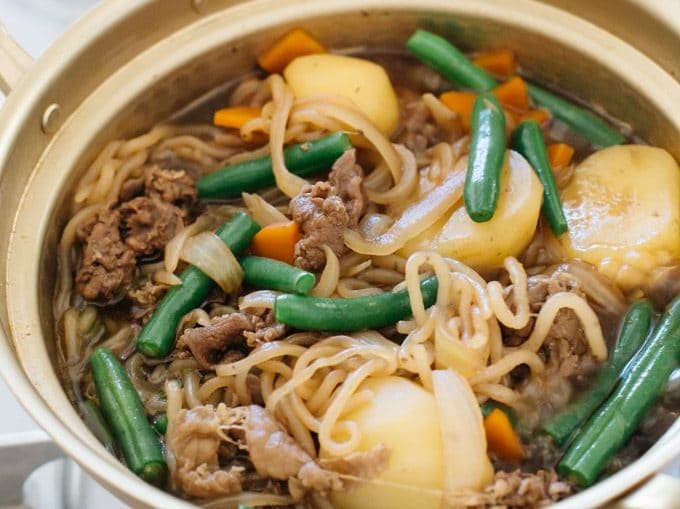
Japanese use shirataki noodles or Ito Konnyaku a lot in their home cooking. Typical recipes which use this noodle are “Nikujaga“, Sukiyaki, Salad and stir fry.
How to store?
Before removing the odour, it is best to keep the noodles in the original packaging with the water. It will keep 2-3 days in the fridge if removed from the packaging. After you have removed the fishy odour, keep the noodles in the water you cooked them in. You can also freeze them though the texture will change but will keep for a month.
Stay connected
If you like the recipe please rate the recipe and leave comments below. Also don’t forget to follow me on Youtube, Pinterest, Facebook, Twitter and Instagram. This way you keep up to date with all the latest happenings on Chopstick Chronicles. Don’t forget to Sign up for a weekly newsletter so you never miss out on new authentic delicious Japanese recipes! Sign up form is on the right-hand sidebar.
Affiliate disclaimer
The site and our mobile application may contain links to affiliate websites. We receive a small affiliate commission for any purchases made by you on the affiliate website using such links.
We are a participant in the Amazon Services LLC Associates Program. This is affiliate advertising designed to provide a means for us to earn a small advertising fee by linking to Amazon. com and affiliated websites.
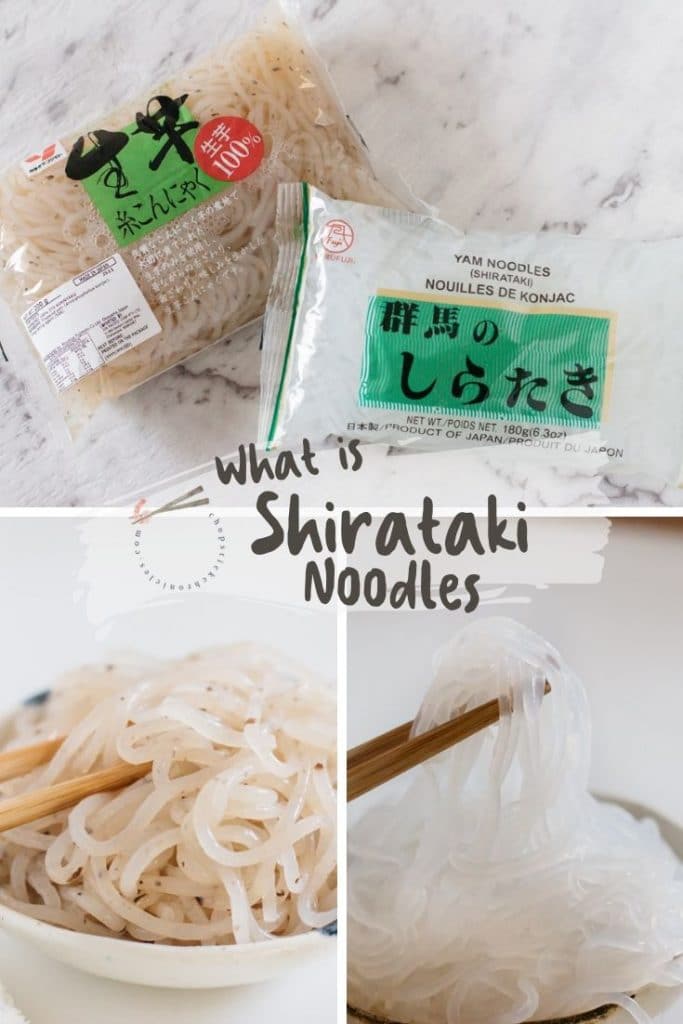
Calcium Hydroxide, itself, has no odor. It is my understanding, from another source, that the reaction between the glucomannan in the konjac powder and the calcium hydroxide creates some Trimethylamine, which has a “fishy odor”. In the quanity that exists in shiritaki noodles or konnyaku it is not harmful, but is objectionable to many people. But, as you said, it is easily removed. Hope this helps…
When was the shiratake noodle first made and eaten in Japan ?
Hi A.Brees, I am sorry I don’t know.
shiratake noodles seem to come either in a package with liquid or in a package dry. do the dry noodles have an order to them? if so, what technique to remove the smell in the dry version is best?
Hi Bo, the dry one does not have much smell.
Thank you for posting about shirataki noodles. Everything that comes up online is about keto diets and I was more interested in traditional dishes from Japan for this ingredient. Thanks!
You are welcome Erin. Japanese dishes are all about balanced diet 😀
Hi I’d like to ask if using a calcium hydroxide /pickling lime is dangerous? I’m planning on making a diy shirataki noodles but worrying if theres a cons on making them my own. Thank you.
Hi Rox, Sorry I can not give you advice on this as I am not qualified enough to give such advice.
Search side effects of calcium hydroxide. I don’t think I’m going to use it. What they usually do is say that it’s so little of it in a product. But once you eat this product and that product, you no longer had a little. It mentions lime and water mixed. Not the fruit lime.